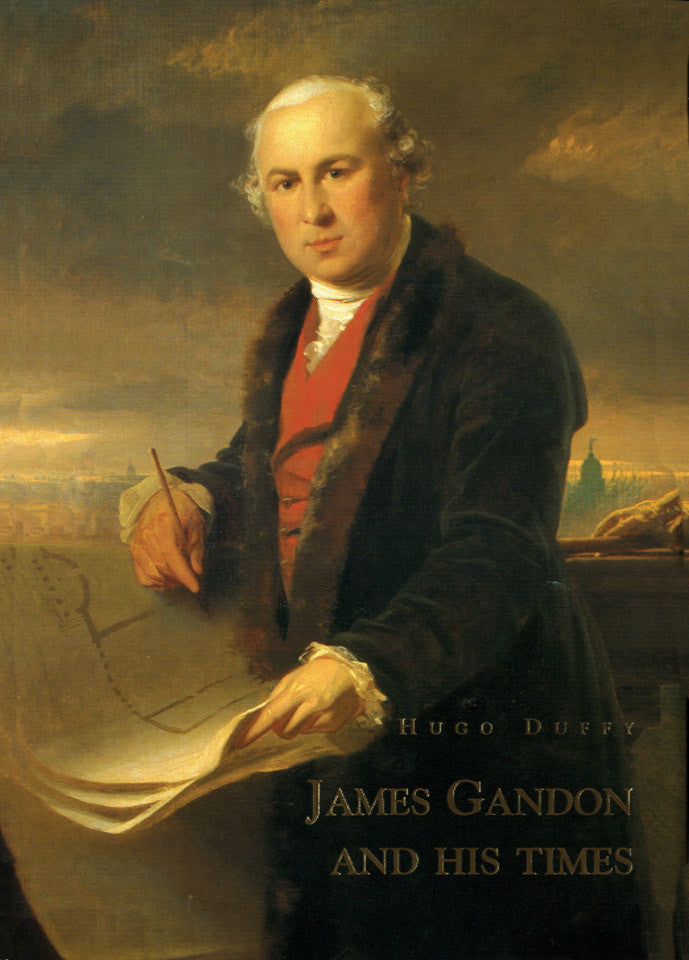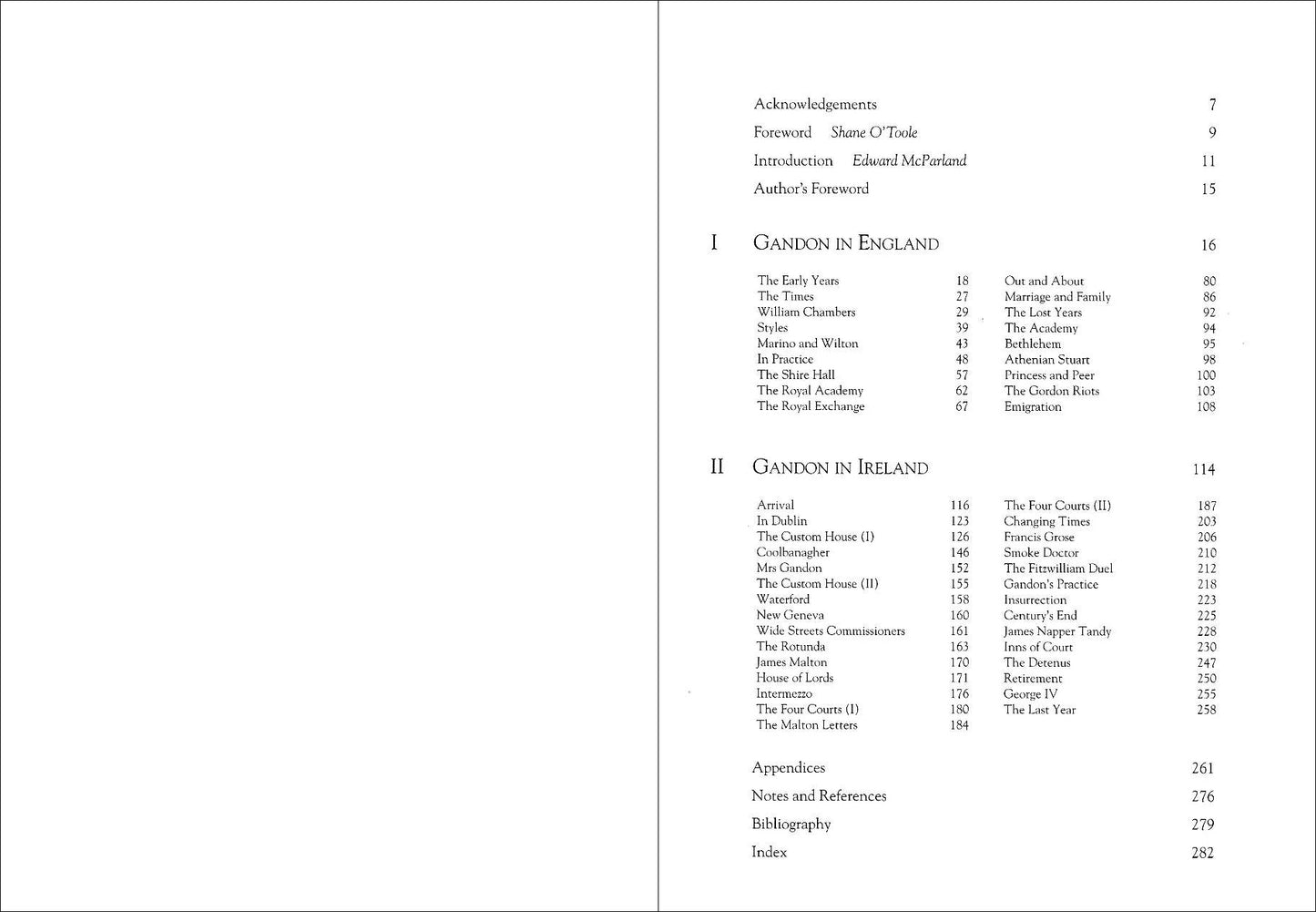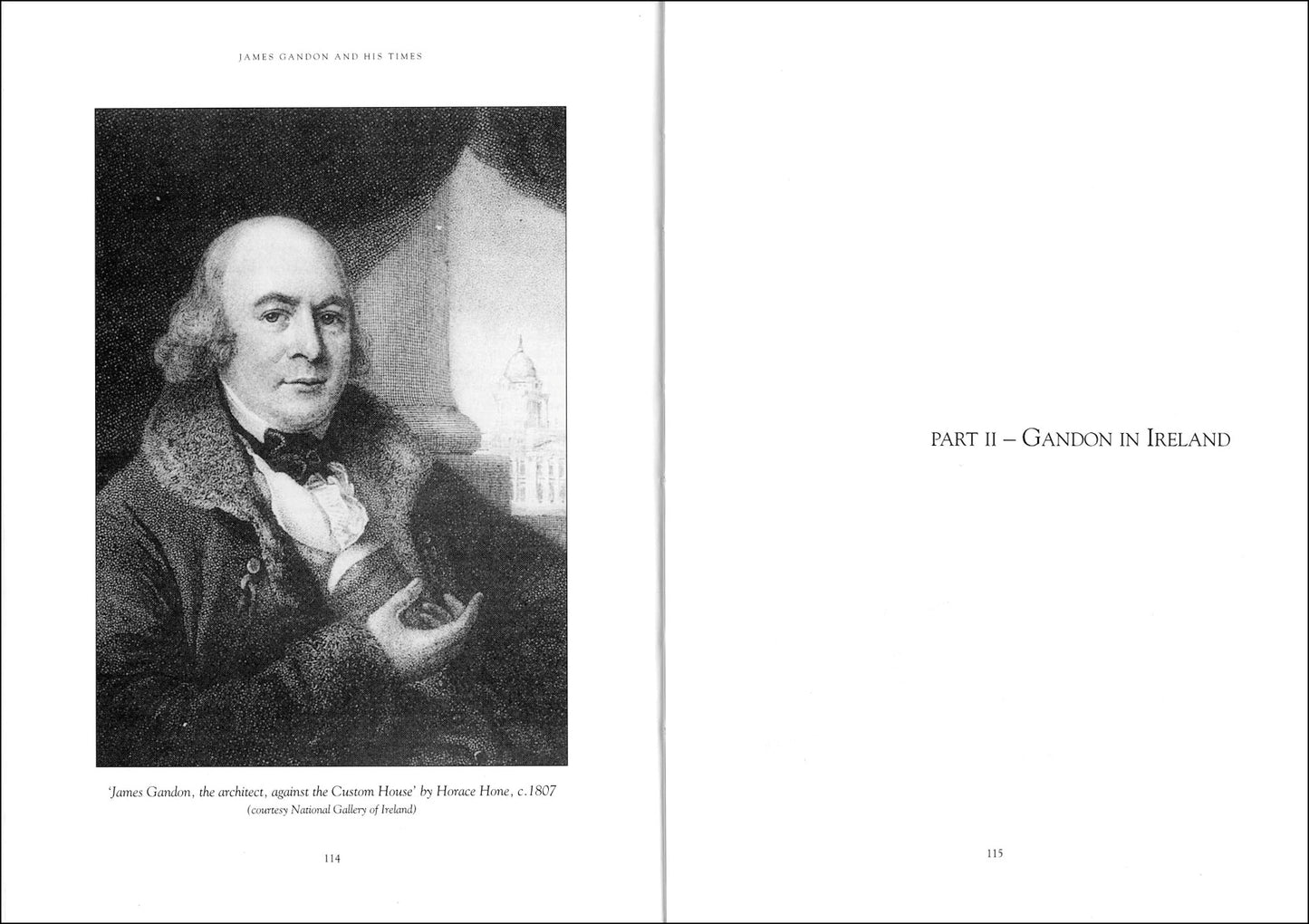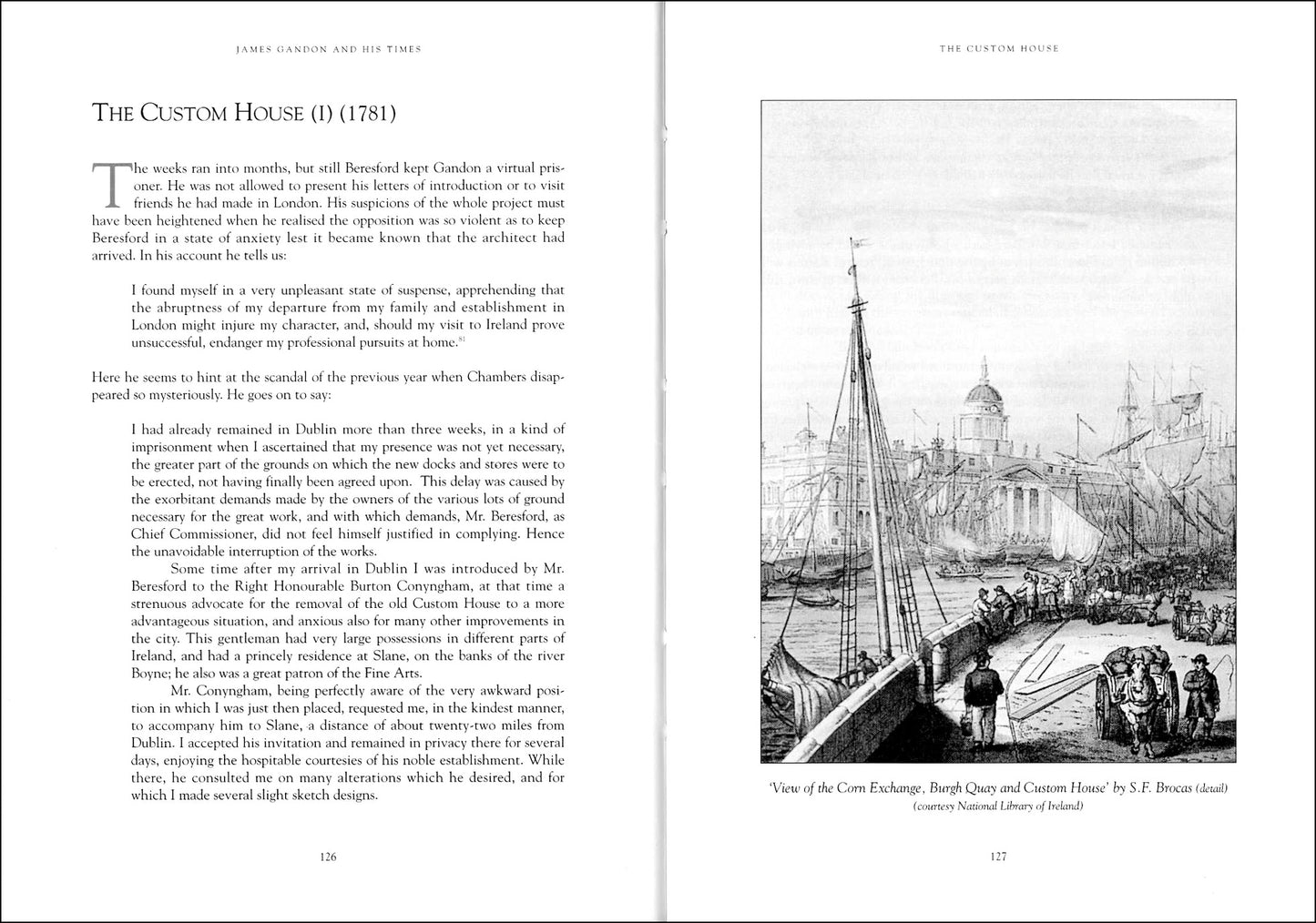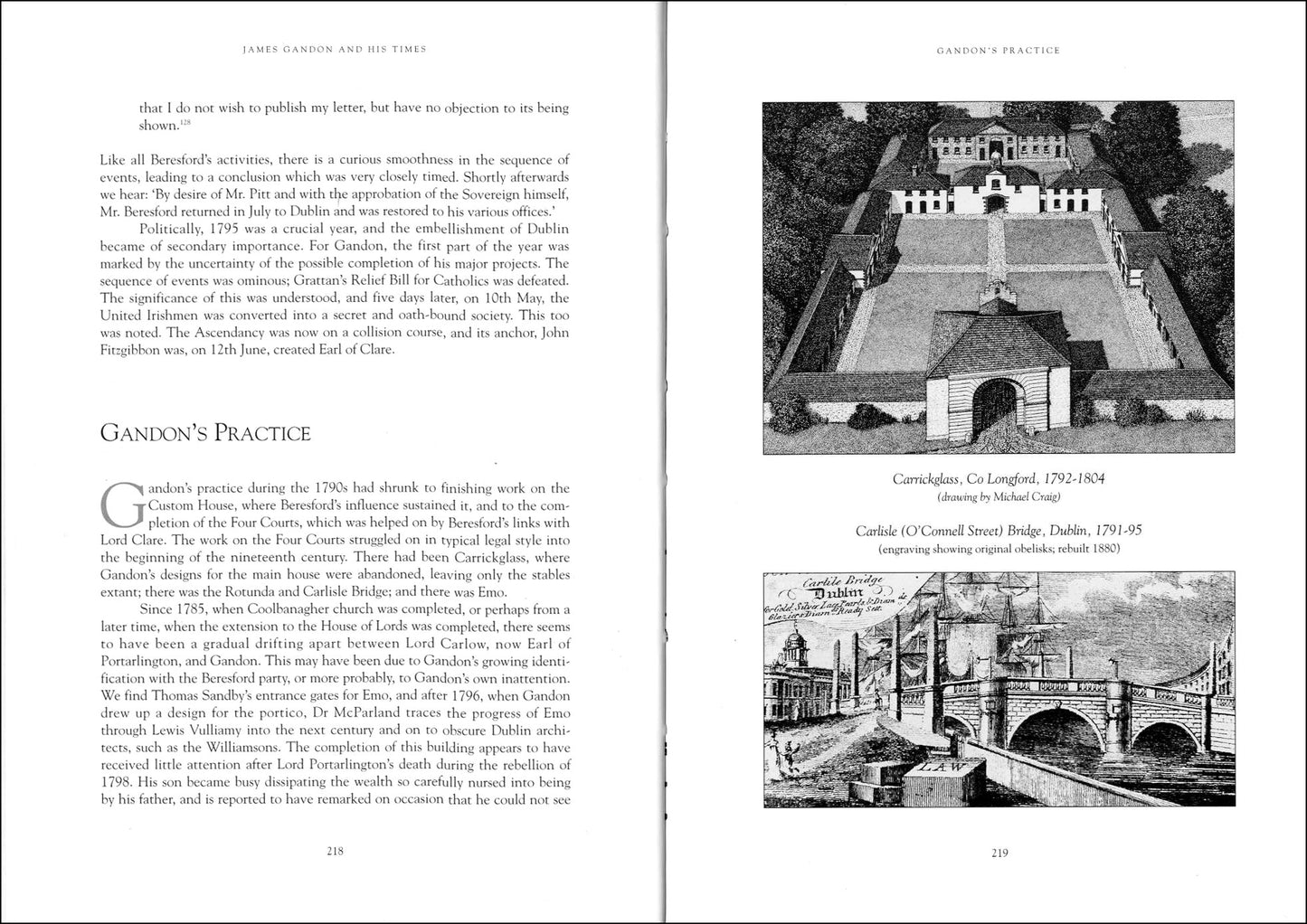Gandon Editions
JAMES GANDON (1742-1823) AND HIS TIMES
JAMES GANDON (1742-1823) AND HIS TIMES
Couldn't load pickup availability
Share
by Hugo Duffy
foreword by Shane O'Toole; intro by Edward McParland
ISBN 978 0946846 283 288 pages (hardback) 24x17cm 118 illus index
James Gandon shaped Dublin as no other architect, before or since. His monumental buildings (such as the Four Courts, King’s Inns, the Custom House) define the popular image of our capital city even today. In their time, they helped create the impetus for the city’s expansion to the east, signalled the decline of the medieval city, and confirmed the ascendancy of ‘Georgian’ Dublin. Hugo Duffy’s biography of Gandon brings the man and his times closer to us.
Above all, this is a human story, of great triumphs matched by equal disappointments. The book offers a rounded picture of a great architect who comes alive in a way not seen before. We learn a great deal about Gandon as an architect by learning about him as a man.
Written by a man with such obvious passion and knowledge for his subject, and one who brings the subject to life. The historical stage is set with great detail. The characters in their turn take this stage, sometimes as benefactors, sometimes as villains. The main character, Gandon himself, appears in many guises – indecisive, garrulous, petulant, rarely humble, and singularly detached as he weaves his professional way through the historical turbulence. Not only is this a most informative book on the man and his times – it’s a great read.
— Alan Phelan, Irish Architect
Hugo Duffy has written an absolutely fascinating account of the man, his times and his work, made all the livelier by an account of the contemporary history which is both fearless and frank. A great read.
— Mary O’Sullivan, Ireland of the Welcomes
Though Duffy, himself an architect, has not stinted on Gandon’s works, and is well versed on his times ... it is the man himself who emerges and proves a most interesting subject. Well illustrated and with pleasing format ... everything you could want, well served up. Oh, and a superb jacket.
— Books Ireland
With meticulous research, Hugo Duffy explores Gandon’s life and reveals in a vivid and immediate way the events that affected Gandon, both personally and in his work. His buildings take their place amidst the hustle and bustle of everyday life ... This book makes a most valuable contribution to our knowledge of Dublin’s development ... and of the political intrigues that shaped Dublin life in the late 18th century and beyond.
— Richard Wood, Irish Examiner
Best entertainment of the week came on Wednesday’s [RTÉ] Arts Show. The spark was a magnificently colourful review by Shane O’Toole of a new biography of James Gandon...
— Tom Widger, Sunday Tribune
_____
EXTRACTS
"On the morning of Thursday, 26th April 1781, the packet boat from Liverpool passed the Poolbeg light and came to anchor near the Pigeon House fort. Among the passengers in their three-cornered hats and skirted coats was a man who limped slightly and leaned on a stout cane as he crossed the deck. He was in his thirty-ninth year, and the signs of middle age, apart from the gout which slowed his progress, were already upon him. Now, with nearly half of his life behind him, for the first time he could see, about two miles to the west, the outskirts of Dublin where the real work of his life was waiting for him. In those days, the approach to the city was leisurely. His carriage rolled along the top of the South Wall for a mile or so, with the sea on either side, before it turned in through the fishing village of Ringsend and on to the old road north of Merrion Square. Across the river lay the tidal flats of the North Lotts, and beyond, on the far side of the bay, rose the green slopes of Clontarf where Lord Charlemont’s new Casino gleamed white between the trees. Perhaps from his carriage window he caught a glimpse of it, and recognised it for what it was with the consolation a familiar object gives in a strange land. Soon his carriage reached the city, and he was brought to the home of the Hon John Beresford, where he was welcomed and held in polite imprisonment for many weeks.
Thus, James Gandon came to Dublin, the time, the place and the patron coinciding to the greatest advantage for him. He was providentially fitted for the work before him. Since his time with Sir William Chambers, his genius had matured during the years of seeming stagnation in London, where, because of his misdirected efforts, even moderate success had eluded him. Now the frustrations of his long apprenticeship were over, and it was in the midst of a conflict moving towards great tragedy and in the wreckage it left behind that his major works would be carried out."
— Hugo Duffy
|
CONTENTS Acknowledgements 7 I GANDON IN ENGLAND 16 The Early Years 18
The Times 27
William Chambers 29
Styles 39
Marino and Wilton 43
In Practice 48
The Shire Hall 57
The Royal Academy 62
The Royal Exchange 67
Out and About 80
Marriage and Family 86
The Lost Years 92
The Academy 94
Bethlehem 95
Athenian Stuart 98
Princess and Peer 100
The Gordon Riots 103
Emigration 108
II GANDON IN IRELAND 114
Arrival 116
In Dublin 123
The Custom House (I) 126
Coolbanagher 146
Mrs Gandon 152
The Custom House (II) 155
Waterford 158
New Geneva 160
Wide Streets Commissioners 161
The Rotunda 163
James Malton 170
House of Lords 171
Intermezzo 176
The Four Courts (I) 180
The Malton Letters 184
The Four Courts (II) 187
Changing Times 203
Francis Grose 206
Smoke Doctor 210
The Fitzwilliam Duel 212
Gandon’s Practice 218
Insurrection 223
Century’s End 225
James Napper Tandy 228
Inns of Court 230
The Detenus 247
Retirement 250
George IV 255
The Last Year 258
Endmatter: Appendices / Notes and References / Bibliography / Index |
